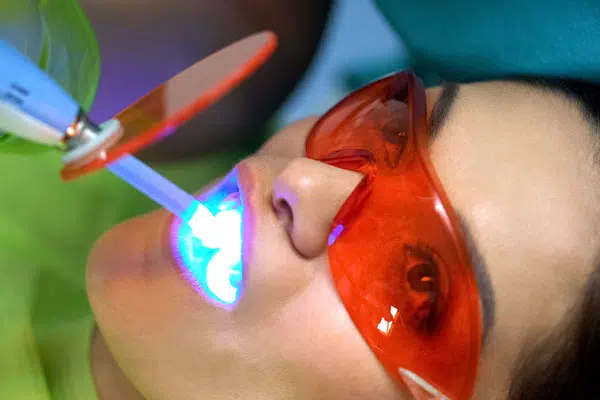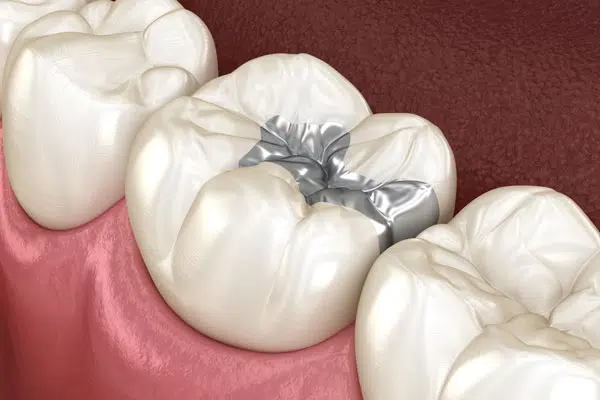
Dental Sealants in Bellevue, WA
Tooth decay is one of the leading causes of tooth loss in both children and adults. While brushing and flossing are essential, they’re sometimes not enough to protect the deep grooves of your back teeth. That’s where dental sealants come in — a simple yet highly effective dental restoration that can shield your teeth from cavities and long-term damage.
At Bellevue Azalea Dentistry, we provide dental sealants as a preventive solution for both kids and adults who want to preserve their natural teeth and maintain a healthy smile.
What Are Dental Sealants?
Dental sealants are thin, protective coatings applied to the chewing surfaces of the molars and premolars. These back teeth have grooves and pits where food and bacteria can easily collect, making them harder to clean.
Sealants fill these grooves, creating a smooth surface that’s easier to brush and less likely to trap debris. The result? A strong barrier against plaque, acids, and cavity-causing bacteria.
Who Can Benefit from Dental Sealants?
Although dental sealants are most commonly recommended for children and teens — especially as their permanent molars erupt — adults can benefit too.
Many adults still face cavities due to genetics, poor oral hygiene, or hard-to-clean tooth surfaces. If you’ve had tooth decay before or want to avoid future fillings, sealants may be a smart preventive option.
Discuss your options with Dr. Uparika Sharma during your next checkup to see if sealants are right for you.
Types of Dental Sealants
There are two primary types of sealants:
- Resin-Based Sealants: These don’t harden until exposed to a curing light, giving the dentist more time to apply them precisely.
- Auto-Polymerizing Sealants: These harden quickly once mixed, allowing for a faster application without extra equipment.
Your dentist will recommend the best type based on your oral health and treatment needs.

What to Expect During the Sealant Procedure
The dental sealant process is quick, painless, and typically completed in one visit. Here’s what happens:
- Cleaning the Tooth: Your dentist will thoroughly clean the tooth surface to remove plaque, food particles, or debris.
- Drying and Isolation: The tooth is dried and kept dry throughout the procedure to ensure proper bonding.
- Etching the Surface: A mild acid is applied to roughen the surface slightly, helping the sealant adhere.
- Applying the Sealant: The liquid sealant is brushed or applied using a small syringe, flowing into the grooves.
- Curing the Sealant: A special LED light is used to harden and bond the sealant to the tooth.
- Checking the Bite: Once hardened, the dentist will check your bite and make small adjustments if needed.
And that’s it — no drilling, no pain, and no downtime!
Are Dental Sealants the Same as Fillings?
It’s a common question! While fillings are used to treat cavities, sealants are applied to prevent them. Think of sealants as a protective layer that helps you avoid the need for fillings in the first place.
How Long Do Dental Sealants Last?
Sealants are durable, but like any dental treatment, they can wear down over time. With good oral hygiene and regular checkups, they can last up to 10 years or longer. If they wear off, your dentist can easily reapply them.
Factors that can shorten the lifespan of a sealant include:
- Poor oral hygiene
- Teeth grinding or clenching
- A diet high in sugar or acidic foods
Are Sealants Safe?
Yes, dental sealants are safe for both children and adults. While some sealants may contain trace amounts of BPA, research by the American Dental Association (ADA) shows that these levels are far below the threshold that could cause harm.
Dental Sealants: Pros and Cons
Pros:
- Painless and non-invasive
- Protects teeth from cavities
- More affordable than future fillings
- Quick and easy to apply
Cons:
- Not permanent (will eventually need reapplication)
- May not be suitable for teeth that already have large fillings or extensive decay
Still, the benefits of preventing decay far outweigh the risks or inconvenience.
Preventing Tooth Decay with Sealants and Good Oral Hygiene
Dental sealants are an excellent line of defense, but they work best when combined with a strong oral hygiene routine:
- Brush twice a day with fluoride toothpaste
- Floss daily
- Avoid sugary and acidic foods
Visit your dentist regularly for checkups and sealant evaluations
Final Thoughts
Whether you’re a parent looking to protect your child’s molars or an adult tired of dealing with cavities, dental sealants offer an easy, affordable, and long-lasting solution.
Ready to take the next step toward protecting your smile? Call Bellevue Azalea Dentistry at 425-998-8109 to book a consultation with Dr. Uparika Sharma. We’ll help you decide if sealants are right for you or your family — and provide the care you can trust.
Call today to schedule a consultation! (425) 998-8109
Call today to schedule a consultation!
(425) 998-8109
frequently asked question
Should my child get dental sealants?
The application of dental sealants on your child’s teeth is an excellent option for preventing tooth cavities. According to the Centers for Disease Control (CDC), “school-age children without sealants have almost three times more cavities than children with sealants.”
Can I eat right after getting sealants?
Once your dentist or hygienist has applied the sealants on your teeth, then you can eat and drink normally. This is because the sealants have now become bonded to your teeth, and they won’t be affected by your daily life activities like eating, drinking, or brushing.
How long do dental sealants take?
The application of dental sealants is a simple and straightforward procedure, which usually takes about 30 minutes to complete. However, the exact time required depends on the number of teeth which need the sealants.
Does sealing teeth prevent cavities?
Yes, dental sealants have been proven to be effective against tooth cavities. According to the Centers for Disease Control (CDC), the application of dental sealants prevents up to 80% of teeth cavities for the first 2 years and up to 50% protection against teeth cavities for up to 4 years.
Can you get sealants on teeth with dental fillings?
Dental sealants are applied for preventing tooth cavities. In the case of teeth that are restored with dental fillings, dental sealants cannot be placed as the fillings serve the same purpose.
Can dental sealants be removed?
Dental sealants can be removed if your dentist feels that they have become damaged and they need removal.
Reviewed By

Dr. Uparika Sharma
Doctor of Dental Surgery (D.D.S.)
Dr. Uparika Sharma brings over five years of hands-on experience in general and cosmetic dentistry. She leads patient care at Bellevue Azalea Dentistry, where she is known for her gentle approach and personalized treatment plans. Dr. Sharma earned her Doctor of Dental Surgery (D.D.S.) degree from the University of Washington and is an active member of the American Dental Association, reflecting her commitment to continued education and high standards of care.
